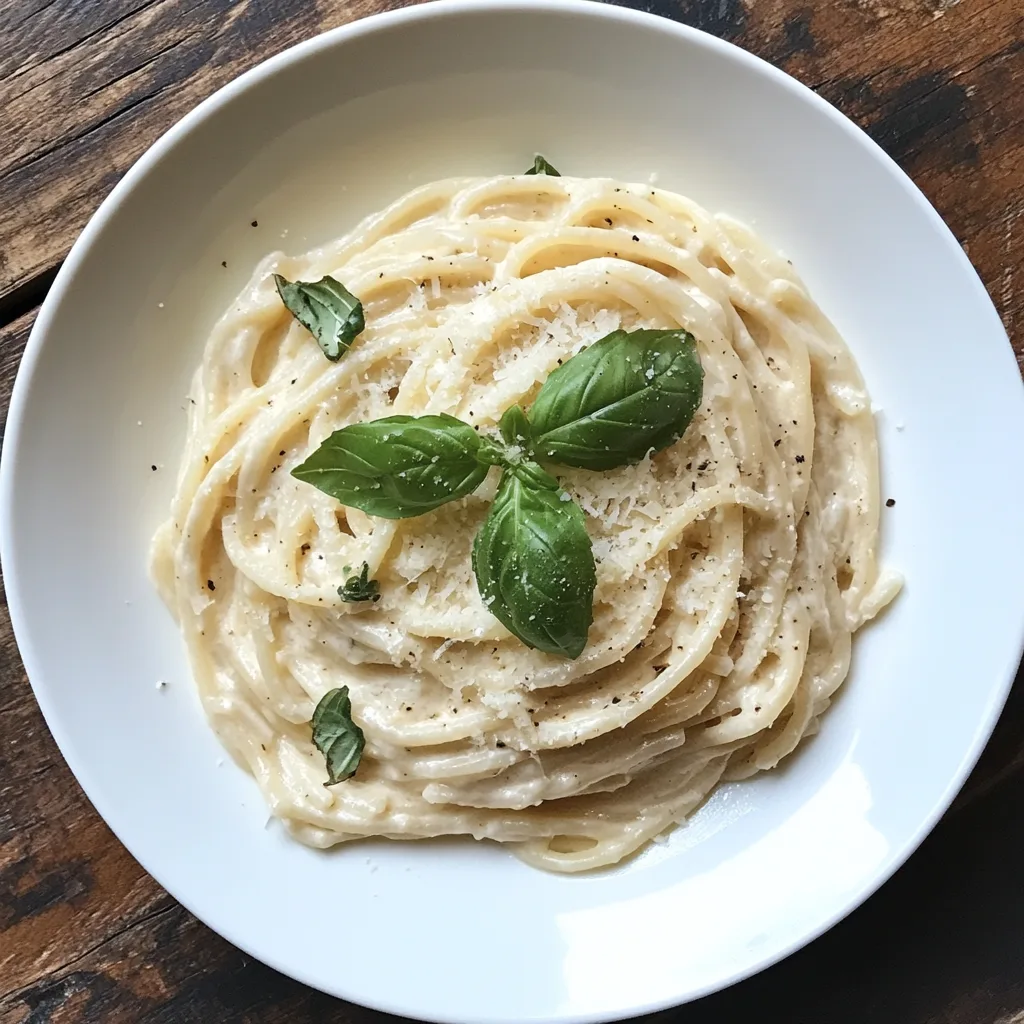There’s something magical about a rich, creamy pasta dish, and white spaghetti Bolognese delivers exactly that! This modern twist on the classic Bolognese swaps the familiar red tomato-based sauce for a velvety, creamy white sauce. The result? A comforting, satisfying meal that’s light and hearty at the same time.
In this article, we’ll take you step-by-step through everything you need to know to make the best white spaghetti Bolognese. From the ingredients you’ll need to tips for perfecting the sauce, variations to suit different diets, and common mistakes to avoid, this guide has got you covered. Whether you’re cooking for family or hosting friends, this dish is sure to impress.
Introduction to White Spaghetti Bolognese
What is White Spaghetti Bolognese?
White spaghetti Bolognese is a delightful alternative to the traditional meat sauce that’s typically made with tomatoes. This version features a creamy, white sauce base crafted from ingredients like heavy cream, Parmesan, and white wine. It’s still packed with ground meat and aromatic vegetables, but the lighter sauce offers a fresh take on the classic Italian favorite.
While it retains the hearty texture and comforting essence of the original, this dish leans on more subtle flavors. It’s a perfect choice for those who love cream-based pastas like Alfredo but want something with a little more complexity.
How Does it Differ from Traditional Spaghetti Bolognese?
The key difference lies in the base. Traditional spaghetti Bolognese uses a tomato sauce rich in acidity and bold flavors, while white spaghetti Bolognese opts for a milder, creamier sauce. The switch from red to white creates an entirely new flavor profile, where the wine, dairy, and Parmesan shine.
Moreover, the choice of pasta often differs. While spaghetti is a popular option, this creamy sauce pairs wonderfully with short pasta like rigatoni or ziti, which helps to capture the sauce in every bite.
Why You Should Try This Creamy Version of Bolognese
If you’re a fan of creamy pasta sauces, this recipe will quickly become a household favorite. It’s versatile, indulgent, and surprisingly easy to make. Plus, the combination of white wine, cream, and Parmesan creates a depth of flavor that’s hard to resist. Serve it for a cozy dinner or a special occasion—it’s a crowd-pleaser every time.
Key Ingredients for White Spaghetti Bolognese
Creating the perfect white spaghetti Bolognese begins with selecting the finest ingredients. At its core, the magic comes from achieving a harmonious balance of flavors through the use of high-quality, fresh components. It’s these thoughtfully chosen elements that heighten the dish to restaurant-level perfection. So, let’s take a closer look at the essential ingredients that make this recipe truly remarkable.
Primary Ingredients: What You Need to Make the Sauce
To create the creamy, savory sauce for white spaghetti Bolognese, here’s what you’ll need:
- Ground meat: Lean options like ground turkey, chicken, or veal are ideal for this lighter version. These meats pair well with the subtle flavors of white wine and cream.
- Sofrito: The classic Italian base made from finely chopped carrots, celery, and onion adds a natural sweetness and depth.
- White wine and broth: Dry white wine creates a robust flavor, while chicken or vegetable broth establish a rich, velvety sauce.
- Dairy: Heavy cream and Parmesan cheese are must-haves for the creamy consistency and nutty finish. For an extra touch of indulgence, add mascarpone cheese.
For more details on authentic ingredients, check out Recipes from Italy’s guide to Ragù Bianco.
Enhancing the Creaminess with Dairy Ingredients
The creamy texture of white spaghetti Bolognese comes from the perfect blend of heavy cream and Parmesan cheese. The cheese not only thickens the sauce but also adds a savory umami flavor. To take it up a notch, stir in mascarpone or crème fraiche for a silkier finish.
Vegetable Additions: Carrots, Onions, and Fennel
Adding vegetables like fennel provides a subtle anise-like flavor that complements the creaminess of the sauce. Combined with the sweetness of carrots and onions, the sofrito forms a flavorful base that augment the overall dish.
Step-by-Step Cooking Instructions
Making white spaghetti Bolognese requires a bit of time and patience, but the process is simple and rewarding. Follow these steps to achieve a rich, creamy sauce that clings perfectly to your pasta.
Cooking the Base: Sautéing Pancetta and Vegetables
Begin by heating a tablespoon of olive oil in a large pan over medium heat. Add diced pancetta and cook until it’s crispy and golden brown. This step adds a smoky, salty flavor to the dish.
Once the pancetta is ready, toss in the sofrito—finely chopped carrots, onions, and celery. Stir occasionally and cook until the vegetables soften and release their aroma, about 5–7 minutes. This base is essential for creating layers of flavor.
Building the Sauce: Adding White Wine and Parmesan Rind
Deglaze the pan with dry white wine, scraping up the browned bits at the bottom. Let the wine simmer until the alcohol evaporates, leaving behind its depth of flavor. Next, pour in the broth and toss in a Parmesan rind for added richness. Simmer gently, allowing the sauce to thicken.
To bring the sauce together, stir in heavy cream during the final few minutes of simmering. Be sure to remove the Parmesan rind before serving.
Simmering and Combining Pasta for Perfect Texture
While the sauce is simmering, cook your pasta—spaghetti, tagliatelle, or even rigatoni—in a pot of salted boiling water until al dente. Reserve some pasta water before draining. Add the cooked pasta directly to the sauce, tossing gently to coat. If the sauce seems too thick, a splash of pasta water can loosen it up, ensuring every strand is covered.
Tips for Perfecting White Spaghetti Bolognese
Crafting the ultimate white spaghetti Bolognese requires a little finesse and attention to detail. While the recipe is forgiving, these tips will help you heighten your dish from great to unforgettable.
Choosing the Right Pasta for White Spaghetti Bolognese
Although spaghetti works beautifully with this dish, other pasta types can add a new level of indulgence. Short pasta like rigatoni, penne, or ziti captures the creamy sauce perfectly in every nook and cranny. Fresh egg-based pasta such as tagliatelle or fettuccine is also a great choice for an authentic Italian twist.
For more inspiration on pairing pasta shapes with sauces, check out our guide to traditional spaghetti bolognese recipes.
Balancing Flavors: Herbs, Wine, and Cream
The success of white spaghetti Bolognese lies in balancing delicate flavors. Use fresh rosemary or thyme to bring out earthy notes, and let the white wine reduce fully to avoid overpowering acidity. Additionally, incorporate cream gradually, tasting as you go, to achieve the right level of richness.
Common Mistakes to Avoid
To establish your dish shines, avoid these common pitfalls:
- Skipping the sofrito: The blend of finely chopped carrots, celery, and onion is essential for building flavor. Take the time to cook it slowly.
- Using the wrong wine: Dry white wine is best. Avoid sweet or overly fruity wines, as they can clash with the savory elements.
- Overcooking the cream: Cream should be added towards the end of cooking to prevent it from curdling.
Variations and Substitutions for White Bolognese
One of the best things about white spaghetti Bolognese is its versatility. Whether you’re catering to specific diets or exploring new flavor combinations, there are countless ways to adapt this dish.
Vegetarian Options: Mushrooms and Plant-Based Alternatives
If you’re opting to skip meat, mushrooms are an excellent substitute. With their meaty texture and umami-rich flavor, they effortlessly replicate the hearty essence of traditional ground meat. To augment the nutritional value, pair mushrooms with lentils or a plant-based ground meat alternative for an added protein boost. This blend not only creates a satisfying and flavorful dish but also maintains the perfect balance of texture and taste.
Making it Gluten-Free: Alternative Pasta Options
For those avoiding gluten, opt for pasta made from rice, chickpeas, or quinoa. Zucchini noodles or spaghetti squash are excellent low-carb alternatives that pair beautifully with the creamy sauce.
Experimenting with Different Meats
Though chicken and turkey are classic choices for this dish, feel free to experiment. Ground pork, veal, or even rabbit can bring unique textures and flavors. For a lighter option, mix ground chicken with finely chopped vegetables like zucchini or spinach to create a healthier yet hearty sauce.
Nutritional Insights for White Spaghetti Bolognese
Enjoying a comforting plate of white spaghetti Bolognese doesn’t mean you have to throw nutrition out the window. With a little thought, you can make this dish both indulgent and balanced, whether you’re looking to lighten it up or simply understand its nutritional value.
Calories and Macronutrient Breakdown
A typical serving of white spaghetti Bolognese provides a mix of essential nutrients, including protein, fats, and carbohydrates.
- Protein: Ground turkey or chicken delivers a lean source of protein, fueling your body with essential amino acids.
- Fats: The addition of heavy cream and Parmesan cheese provides satisfying fats, though these can add up quickly if you’re not careful with portions.
- Carbs: Pasta serves as the primary source of carbohydrates, making this dish an excellent option for energy. Opt for whole-grain or legume-based pasta if you’d like to boost fiber and keep blood sugar levels steady.
On average, a serving contains around 500–600 calories, depending on portion size and the specific ingredients used.
Healthier Versions: Lower-Fat Dairy and Whole-Grain Pasta
If you’d like to enjoy white spaghetti Bolognese while keeping it lighter:
- Swap heavy cream: Use a lower-fat cream alternative, such as half-and-half or a dairy-free cream substitute.
- Reduce the cheese: Cut back slightly on Parmesan or choose a lighter cheese option to minimize fat without sacrificing flavor.
- Try healthier pasta: Whole-grain, chickpea, or zucchini noodles make great alternatives for those watching their carbohydrate intake.
These small adjustments can make a big difference without compromising the creamy and satisfying nature of the dish.
FAQs on White Spaghetti Bolognese
Let’s address some of the most common questions about white spaghetti Bolognese. Whether you’re making it for the first time or tweaking the recipe to suit your taste, these answers will help establish success.
What Makes White Spaghetti Bolognese Unique?
Unlike traditional Bolognese, which relies on a bold, tomato-based sauce, white spaghetti Bolognese gets its creamy texture from heavy cream and cheese. This sauce is rich yet subtle, allowing ingredients like white wine and aromatic vegetables to shine.
Can You Use Red Wine Instead of White?
Although white wine is preferred for its lighter and more delicate flavor, you can use red wine if that’s what you have on hand. Just keep in mind that red wine adds a deeper, more robust flavor, which can slightly overpower the creaminess of the dish.
How Long Can You Store White Bolognese Sauce?
The sauce stores beautifully in the refrigerator for up to three days when kept in an airtight container. If you’d like to prepare it in advance, freeze the sauce for up to two months. Thaw it overnight in the fridge and reheat gently on the stovetop, adding a splash of broth or cream to restore its velvety texture.
Conclusion
White spaghetti Bolognese offers a delightful twist on the classic recipe and undoubtedly earns a spot in your collection. With its creamy, velvety sauce and delicate hints of white wine, this dish strikes the perfect balance between elegance and comfort. Served with perfectly cooked pasta, it provides a lighter yet indulgent experience that is sure to impress any pasta enthusiast.
Whether you’re serving it for a family dinner, a cozy night in, or a special occasion, the versatility and elegance of this recipe are sure to impress. By carefully balancing flavors and experimenting with variations like vegetarian options or gluten-free pasta, you can tailor the dish to suit any preference or dietary need.
So, gather your ingredients, follow the steps, and enjoy the satisfaction of creating a comforting and flavorful plate of white spaghetti Bolognese. It’s a recipe that’s as rewarding to make as it is to savor. Bon appétit!

